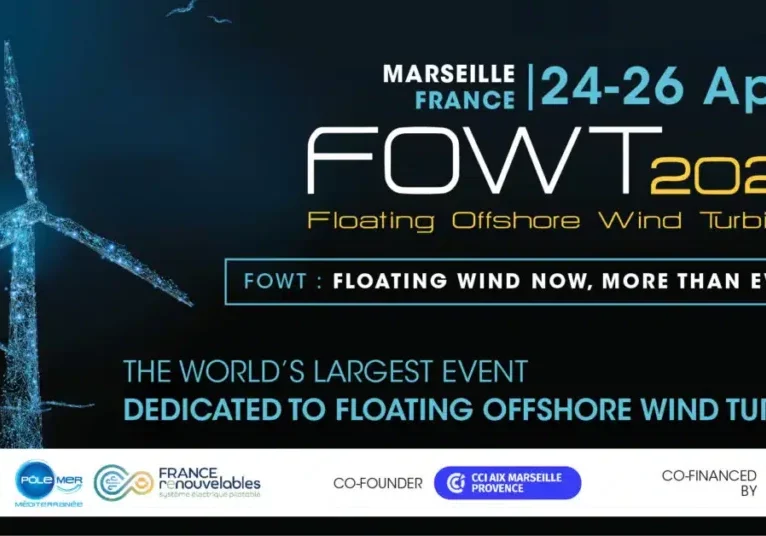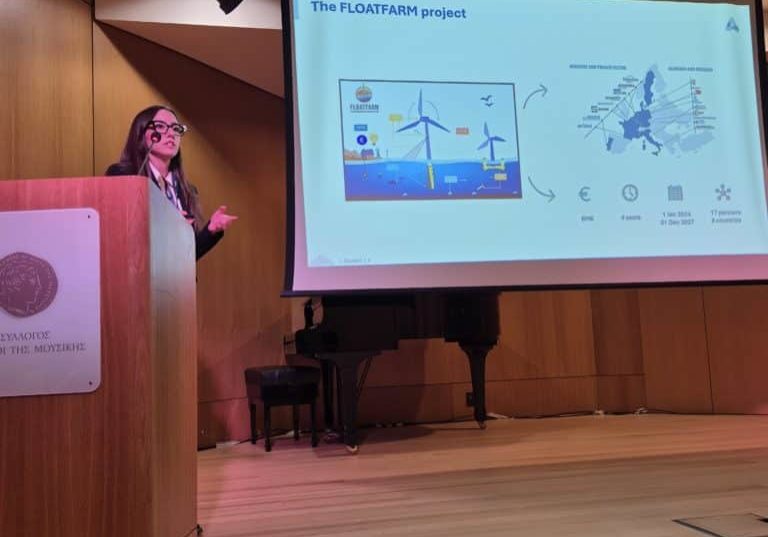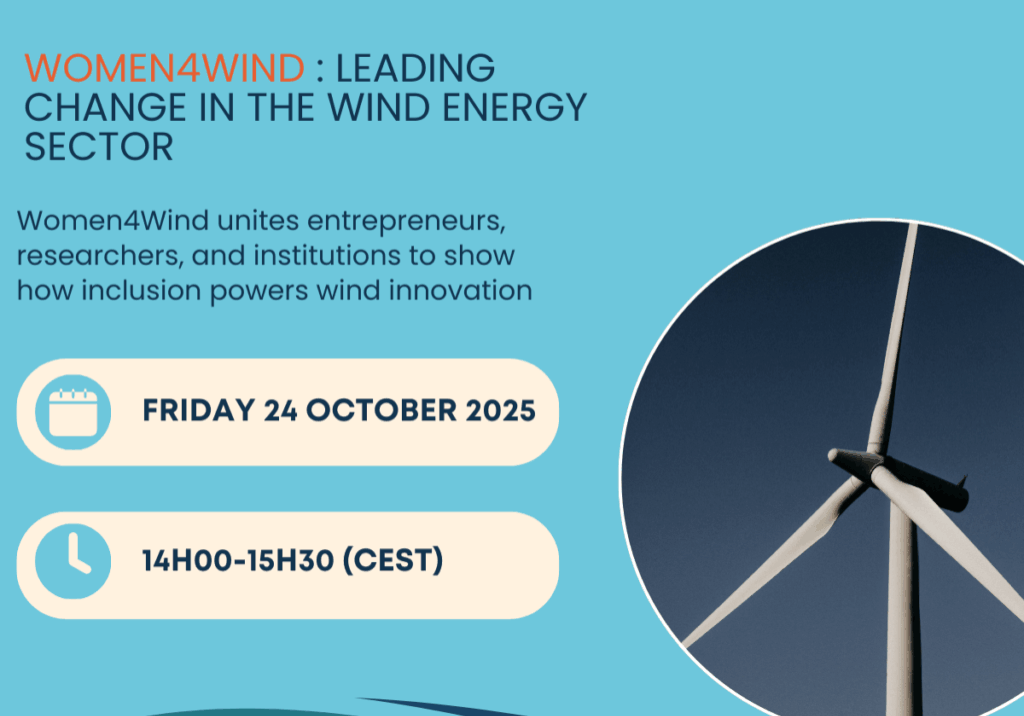In this edition, we meet the EURONOVIA team, leaders of the Work Package (WP) on communication, dissemination, and exploitation within FLOATFARM!
Virginie Robin is the founder and CEO of EURONOVIA. With extensive experience across numerous EU-funded projects, Virginie brings strategic oversight to EURONOVIA’s contribution to FLOATFARM. Emmanuelle Moreau and Inès Martorell are leading the communication and dissemination activities for FLOATFARM as WP leaders. They oversee the design and implementation of the project’s communication, dissemination and outreach strategy.
Together, this team plays a key role in maximising the visibility and impact of FLOATFARM’s outcomes across Europe and ensuring that the project’s results reach key stakeholders.
Could you briefly present your organization?
At Euronovia, our mission is to support high-impact projects linked to major global challenges such as the energy transition. For over a decade, we have been supporting a diversity of project leaders through the complexities of EU programmes, helping them successfully navigate the EU funding landscape.
We work closely with project coordinators to craft the best proposal in a highly competitive environment and help maximise the projects’ impacts by leading the communication and dissemination activities
Our work is driven by four 4 core beliefs: the importance of Europe as a springboard for R&I, the need for innovation to answer major global challenges, as well as the need to communicate about R&I projects and disseminate its results. And finally, the urgent need to support women entrepreneurship.
At the heart of our mission is the conviction that the EU, through Horizon Europe, the world’s largest R&I programme, can have a significant role in leveraging progress and creating meaningful change.
EURONOVIA regularly participates as a communication and dissemination partner in EU collaborative projects, what makes this role valuable and what lessons have you learnt from working across various sectors?
At Euronovia, we regularly participate as communication and dissemination partner In EU collaborative projects. Our involvement in these projects is driven by a strong desire to highlight the added value of European cooperation, working together to collaborate. We believe that collaboration at the EU level enables greater innovation and resilience: together we are stronger.
Our goal is also to take the results further, so that they reach EU citizens. If nothing is done to spread the word about the existence of project results, they simply sit on a shelf gathering dust. Through communication and dissemination activities, we make sure that these results reach a wider audience and have a greater chance of being used to address major challenges.
We also choose to get involved in projects that include topics that mean something to us, such as gender equality in science, because we believe it’s important to give visibility to these values within the R&I ecosystem.
From working across various sectors, we’ve learned a lot. Our role is complementary to that of the technical partners in the project, we bring added value by building bridges between the research outcomes and their potential audiences. These collaborations also help build strong communities within specific sectors, but also across sectors, as seen in projects like FLOATFARM and HER FUND.
What specific actions have been implemented by EURONOVIA since the start of FLOATFARM?
From January 2024, the communications and results dissemination team set about creating the project’s graphic identity. After lengthy discussions and consultation meetings, in March 2024 we launched the development of FLOTFARM logos, the visual identity of official documents and the implementation of a graphic charter. We then worked on the development of communication media such as brochures, flyers and roll-ups, to reinforce the visibility of the project’s identity.
A few weeks later, the FLOATFARM website and LinkedIn account were launched. From that moment on, we had the pleasure of interacting with a particularly enthusiastic and responsive community, which encouraged us in our communication actions. Then, we wanted to give a voice to the people behind FLOATFARM, so we’ve started a series of “Meet the team” interviews, to introduce our community to those who bring the project to life.
Finally, during this first year, Euronovia took care of getting in touch with our various sister projects, by taking part in exchange and brainstorming sessions around the FOWT theme. In this way, we are creating a framework that is conducive to collaboration between projects, facilitating opportunities for communication and visibility for projects working on wind energy.
What are your key communication objectives for the next phase of the project?
FLOATFARM is a 4-year project, and our communication and dissemination activities are structured around 3 key phases that align with the project’s evolution. With the initial awareness phase now behind us (January – June 2024), we are currently in the midst of Phase 2: targeted dissemination, which spans from July 2024 to December 2026.
This second phase is all about deepening engagement. Having introduced FLOATFARM to our stakeholders and the broader public during the first year of the project, our focus now is to ensure that our work reaches the right audiences with the right messages. Our communication objectives are therefore centred on strategic outreach and tailored content with our targeted audiences. Our aim is not simply about disseminating results, we are aiming at fostering dialogue, showcasing progress, and reinforcing the relevance of FLOATFARM within the offshore wind landscape. In doing so, we are adhering to EU communication guidelines while also going beyond them, choosing formats and channels that are engaging, inclusive, and forward-thinking. This approach also reflects Euronovia’s core values, as underlined by Virginie, particularly our commitment to gender equality and the visibility of women in science and innovation. In line with these principles, we have also made the decision to step away from X/Twitter, choosing instead to focus our effort on platforms and formats that are more constructive and inclusive.
Our communication and dissemination activities during this phase are diverse and designed to ensure maximum reach and impact across relevant audiences. We are actively sharing project developments through newsletters, press releases, and the dissemination of scientific publications and project results, making sure our work is both visible and accessible. FLOATFARM is also being represented at major industry events, including WindEurope in Copenhagen, FOWT in Brest, and WESC in Nantes. In addition, we are organising at least two thematic webinars, including the upcoming Women4Wind webinar in 2025, which will explore the gender dimension in floating wind. Other topics will include the impact of underwater noise on marine ecosystems and deliberative processes and practices in EU countries related to the offshore renewable energy sector. To complement these efforts, we are producing a motion design video, to be released in Autumn 2025, which will offer a dynamic and accessible introduction to the project’s vision, activities, and expected outcomes.
What is unique about communicating a multidisciplinary project like FLOATFARM?
Working on a project like FLOATFARM gives us the opportunity to deal with a wide variety of disciplines and themes. Between the natural sciences, engineering, technology and the social sciences, it’s easy for us to communicate on these different facets of the project, allowing for diversified communication.
FLOATFARM is also a challenge for us, as our role is also to make the key messages from the research as simple and straightforward as possible.
Finally, our involvement allows us to highlight the project’s contribution to the challenges of sustainability and social acceptance of offshore wind energy. It’s a strong message for Euronovia to be involved in this type of project, and we’re proud to be taking part in the visibility and promotion of a project like FLOATFARM.
From your perspective, how does communication and dissemination contribute to FLOATFARM’s overall impact?
Communication and dissemination activities play a central role in amplifying FLOATFARM’s impact, extending well beyond the boundaries of the consortium. It’s not just about increasing visibility, it’s about ensuring the project is understood, trusted, and positioned within the broader offshore wind ecosystem, both at the European and international level. We aim to build engagement, foster collaboration, and highlight the project’s relevance in addressing key challenges in the context of Europe’s response to climate change and the transition to a more sustainable future.
FLOATFARM is also actively engaged through our connection with the European Commission’s Wind Energy Cluster. We maintain a strong and collaborative relationship with our sister projects, and there is a shared commitment among communication and scientific teams to work together, aligning our efforts to create a unified and collaborative impact across Europe.
Moreover, communication and dissemination activities are essential for ensuring the project’s results reach the right audiences such as industry players, researchers, policymakers, and civil society. Our strategy aims at helping to bridge gaps between academic and non-academic actors, startups and large companies, public institutions and citizens directly or indirectly affected by offshore wind infrastructures.
Last but not least, FLOATFARM is funded by the European Union, and with that comes a responsibility to ensure that publicly funded research delivers value back to the public. Our activities ensures that the knowledge, progress, and outcomes generated by the project are not locked behind closed doors but are shared transparently thus contributing to collective progress across Europe’s energy transition.
EURONOVIA has supported initiatives promoting gender equality, including in wind energy – what are your reflections on the role of women in this sector and in EU-funded projects such as a FLOATECH and FLOATFARM?
At Euronovia, we believe it’s essential to highlight and support the role of women in sectors like wind energy and especially in EU-funded projects such as FLOATECH and FLOATFARM. There are women in this sector, but they are often found in lower-level positions. They need to be put forward, brought into the spotlight, and recognised for their contributions.
We also see the need to support women-led startups, which often require an extra push to gain visibility and traction. That’s exactly what we aim to do in the HER FUND project, by giving these entrepreneurs the support and platform they deserve.
We strongly believe in the power of role models. That’s why we decided to organise webinars dedicated to women in wind energy. We hosted one in the context of FLOATECH (replay available) and are planning another one as part of the FLOATFARM project. These moments are key to raising awareness, inspiring others, and encouraging more women to take on leadership roles in this sector.



